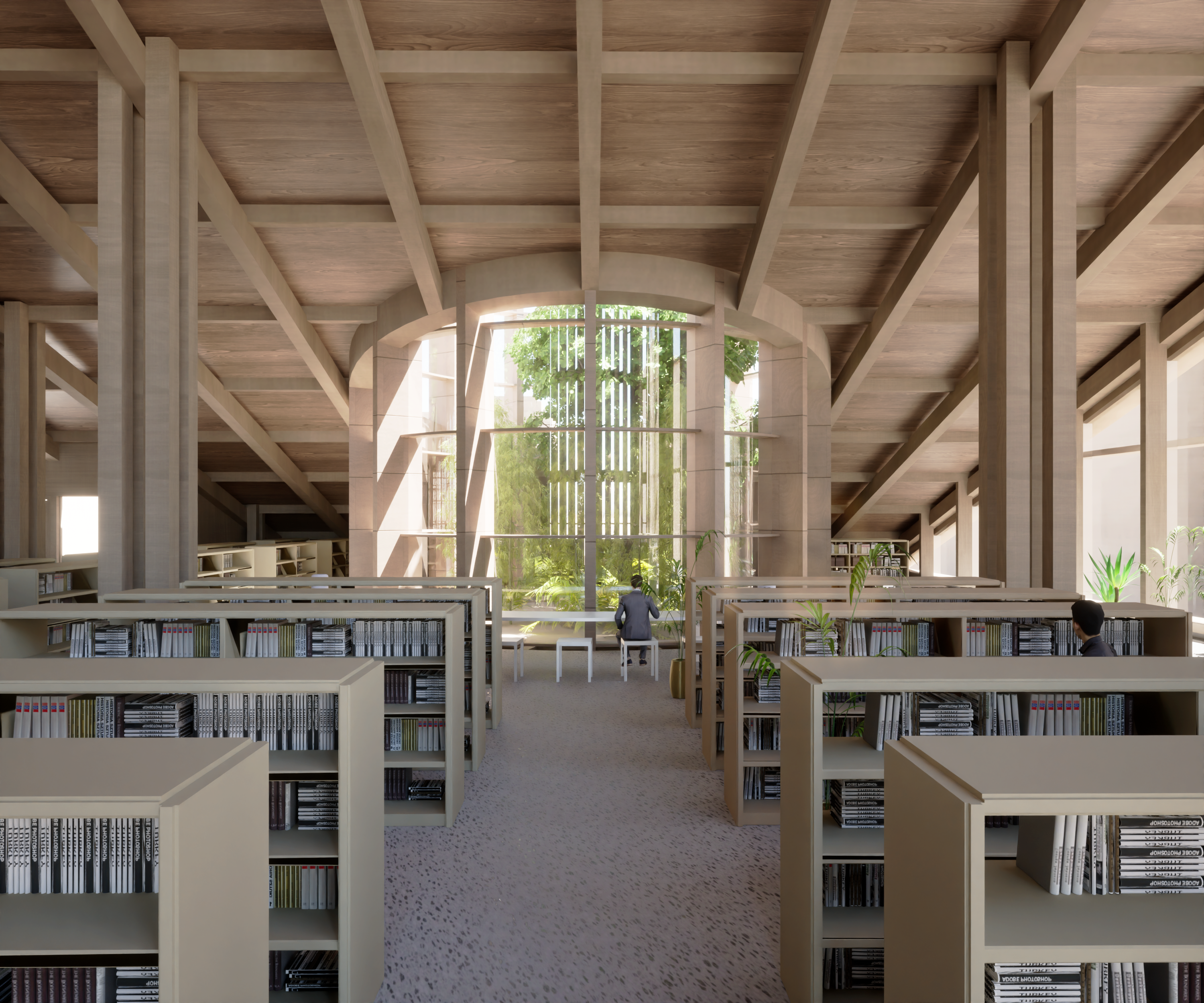ELEVATED COMMONS
Competition, Second Place
Site: SUNY Campus, Syracuse, NY
Team: Yue Zhuo, Fei Xiong
December, 2023
Competition, Second Place
Site: SUNY Campus, Syracuse, NY
Team: Yue Zhuo, Fei Xiong
December, 2023
The primary design move is to create a occupiable, humble, but simultaneously monumental
roofscape that seamlessly extends the public space of the quad, creating an elevated
commons on top of the original library. Modulation of step height on the roofscape forms
different spaces for study, performances and social events, and roof gardens to collect
rainwater. During winter, when snow covers the roof, it becomes a slope for informal snow
sliding. The roof becomes huge bleachers for festivals and outdoor events in warmer times.
Underneath the roofscape, the original structure remains essentially unchanged. The enclosed
space between the existing roof and the added roof becomes a generous space for reading and
storing books.





We adopted an integrated approach simultaneously, considering functionality and structural solutions. Two distinct place-making objects penetrate the roof and enhance connectivity and interaction above and below the roof. Functionally, these objects are a garden, a reading space, and circulation cores. Structurally, they also support the roof alongside the timber column grid, diversifying the load-bearing strategy of the building. The two objects, the columns and the roof beams, all use different timber species. Using a variety of timber species can promote sustainable forestry practices by encouraging responsible harvesting and managing diverse forest ecosystems. This approach supports biodiversity and helps prevent monoculture, which can have negative environmental impacts. Also, different timber species have varying mechanical properties, such as strength, stiffness, and density, that are good for particular building components.

In Upstate New York, though timber resources are abundant, we discovered suppliers for engineered wood are scarce after extensive research. Instead of selecting suppliers from the north-western region or seeking the south, we propose to source timber from Quebec, with the primary advantage of geographical proximity and the St. Lawrence River as a carbon-efficient transportation passage. Water transport has a lower carbon footprint per ton-mile than road transport because ships can carry large volumes of cargo and are more energy-efficient per unit of weight. The St. Lawrence River, with its multiple water-locks, is engineered to transport cargo.





